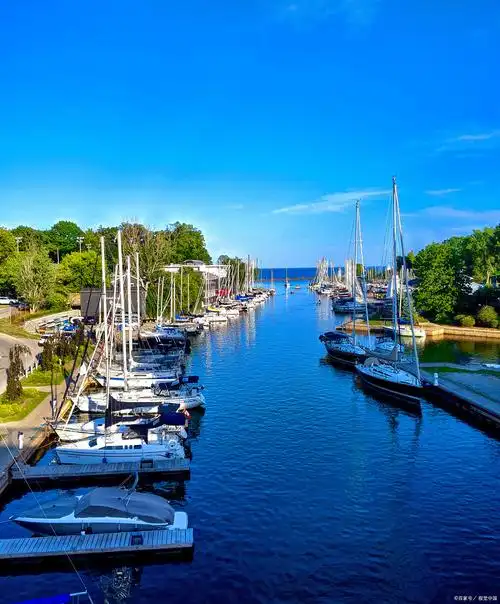Global Travel Information
Namib Desert, Namibia
The Enigmatic Beauty of the Namib Desert: A Journey Through Time and Sand

Stretching along the Atlantic coast of Namibia, the Namib Desert is one of the oldest and most mesmerizing deserts on Earth. With its towering dunes, hauntingly beautiful landscapes, and unique adaptations of life, the Namib is a place where time seems to stand still. Covering an area of approximately 81,000 square kilometers, this desert is a testament to nature’s resilience and artistry.
A Desert Born of Time
The Namib Desert is estimated to be between 55 and 80 million years old, making it the oldest desert in the world. Its name, derived from the Nama word meaning "vast place," perfectly encapsulates its endless horizons. Unlike other deserts shaped by recent geological events, the Namib has endured millennia of shifting climates, ocean currents, and wind patterns.
One of the most striking features of the Namib is its proximity to the cold Benguela Current, which flows northward along the coast. This current creates a unique microclimate where dense fog rolls inland, providing life-sustaining moisture to the desert’s flora and fauna. The interaction between the cold ocean and the scorching desert results in some of the most surreal landscapes on the planet.
The Dunes of Sossusvlei: Nature’s Masterpiece
No discussion of the Namib Desert is complete without mentioning Sossusvlei, a salt and clay pan surrounded by some of the tallest sand dunes in the world. Among them, Dune 45 and Big Daddy stand out, their rust-colored slopes shifting with the light of dawn and dusk. The dunes owe their vivid red hue to iron oxide, which coats the sand grains, creating a breathtaking contrast against the stark white clay pans below.
Climbing these dunes is a challenge, but the reward is an unparalleled view—a sea of undulating sand stretching endlessly toward the horizon. At sunrise, the interplay of light and shadow transforms the landscape into a living painting, where every ridge and curve tells a story written by the wind.
Life Against All Odds
Despite its harsh conditions, the Namib Desert teems with life uniquely adapted to survive. The Welwitschia mirabilis, a prehistoric plant, is one of the desert’s most famous residents. Some specimens are over 2,000 years old, surviving on moisture from the coastal fog. Its two long, strap-like leaves grow continuously, fraying over time into a tangled mass.
The desert is also home to the Namib Desert beetle, an ingenious insect that collects water from fog by tilting its body to let droplets roll into its mouth. Larger animals, such as oryx and springbok, traverse the dunes in search of sparse vegetation, while the elusive brown hyena and desert-adapted elephants navigate the dry riverbeds.
The Ghostly Skeleton Coast
To the northwest, the Namib merges with the infamous Skeleton Coast, a graveyard of shipwrecks and bones. The name comes from the whale and seal skeletons that once littered the shore, along with the wreckage of vessels lost to the treacherous fog and currents. Today, the remains of these ships lie half-buried in the sand, their rusted hulls whispering tales of maritime tragedy.
This region is one of the most desolate yet hauntingly beautiful places on Earth. The cold Atlantic crashes against the dunes, creating a surreal meeting of desert and ocean. Few creatures brave this environment, but those that do—like the Cape fur seals that bask on the shores—thrive in isolation.
Human Footprints in the Sand
The Namib has not only shaped its wildlife but also the people who have lived on its fringes. The Himba, a semi-nomadic tribe, have adapted to the arid conditions with remarkable resilience. Known for their ochre-covered skin and intricate hairstyles, the Himba maintain a deep spiritual connection to the land.
European explorers, lured by myths of lost cities and hidden riches, ventured into the Namib with mixed success. The German colonization in the late 19th century left behind ghost towns like Kolmanskop, a diamond-mining settlement now swallowed by the dunes. Walking through its abandoned houses, filled with sand up to the ceilings, feels like stepping into a post-apocalyptic dream.
Conservation and the Future
The Namib Desert is protected within the Namib-Naukluft National Park, one of Africa’s largest conservation areas. Efforts to preserve its fragile ecosystem are crucial, especially as climate change threatens to alter its delicate balance. Tourism, if managed sustainably, offers a way to appreciate the desert’s beauty without harming it.
For those who visit, the Namib leaves an indelible mark. It is a place of extremes—of silence and wind, of barrenness and hidden life. It teaches humility, reminding us of nature’s power to create and destroy.
Conclusion: A Desert Like No Other
The Namib Desert is more than just sand and stone; it is a living museum of geological and biological wonders. From the towering dunes of Sossusvlei to the fog-bathed plains of the coast, every corner holds a secret waiting to be discovered. To stand in the Namib is to witness Earth in its purest form—raw, untamed, and eternally captivating.
For those who seek adventure, solitude, or simply the awe of nature’s grandeur, the Namib Desert beckons—an ancient land where the past and present merge beneath an endless sky.
相关文章
- Elbe River Street Food: Quick Bites to Try
- Elbe River Theater Performances: Outdoor Shows in Summer
- Elbe River Concert Venues: Live Music by the Water
- Elbe River Film Locations: Movies Shot Along the River
- Elbe River Historical Markers: Learn About Local History
- Elbe River Archaeological Sites: Ancient Finds Near the Water
- Elbe River Botanical Gardens: Flowers & Plants Along the Banks
- Elbe River Zoos & Aquariums: Family Fun Near the River
- Elbe River Amusement Parks: Rides with River Views
- Elbe River Camping Spots: Pitch a Tent by the Water
发表评论
评论列表
- 这篇文章还没有收到评论,赶紧来抢沙发吧~


